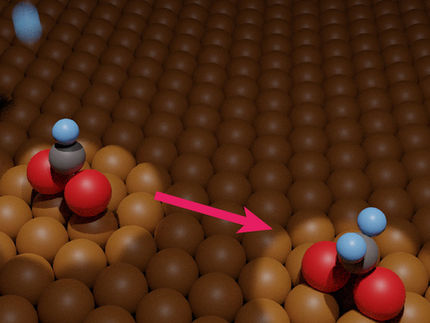Metal-organic frameworks feel the pressure of Argonne scientists
New research may be a key step towards real-world uses of MOFs
Advertisement
Scientists at U.S. Department of Energy's Argonne National laboratory are putting the pressure on metal-organic frameworks (MOF). In MOF materials, metal ions can be connected by organic molecules to form scaffolding-like structures similar to a molecular Tinker toy. The struts that make up the framework structure do not fill space efficiently, in the way that Lego blocks might, leaving extra spaces in the structure which are capable of containing guest molecules. Behaving as molecular-scale sponges these MOFs have wide ranging potential uses for filtering, capturing or detecting molecules such as carbon dioxide or hydrogen storage for fuel cells.
"By examining the framework at various pressures," scientist Karena Chapman said. "We found that the MOF compresses rapidly at high pressures."
Since the MOF frameworks do not fill space efficiently, the structures are particularly sensitive to even relatively moderate applied pressures. For any carbon dioxide or hydrogen gas storage applications, the MOF materials (which are generally formed as fine particles or small crystals) will need to be compressed into pellets to optimize the volume capacity (an important target parameter). This would subject the structure to pressures up to several gigapascals (GPa).
While a few GPa of pressure would have minimal impact on denser oxide-based materials, MOFs may show significant and possibly irreversible distortions to the structure and to the selective gas storage properties. Understanding how MOF materials can behave under pressure is an important step in taking MOF technology beyond the lab.
Chapman, along with Argonne scientists Gregory Halder and Peter Chupas, synthesized a Copper-Benzenetricarboxylate MOF and subjected the framework to various pressures inside a diamond anvil cell with and without pressure-transmitting fluids at the laboratory's Advanced Photon Source.
X-ray diffraction from the laboratory's Advanced Photon Source data showed a transition from the hard regime where pressure transmitting fluid penetrates the framework cavities to a soft regime where the MOF compresses concertedly.
This uncharacteristic behavior is caused by the presence of smaller molecules in the pressure-transmitting fluid that can permeate the framework's cavities. This leads to a supersaturated state that counteracts the external pressure until a threshold pressure is reached and the MOF rapidly compresses and cannot allow any additional guest molecules into the cavities.
"MOFs have wide and varied potential applications in the real world," Chapman said. "By exploring high pressure phenomenon, we come a step closer to realizing these advanced applications."
Original publication: Journal of the American Chemical Society 2008.




























































